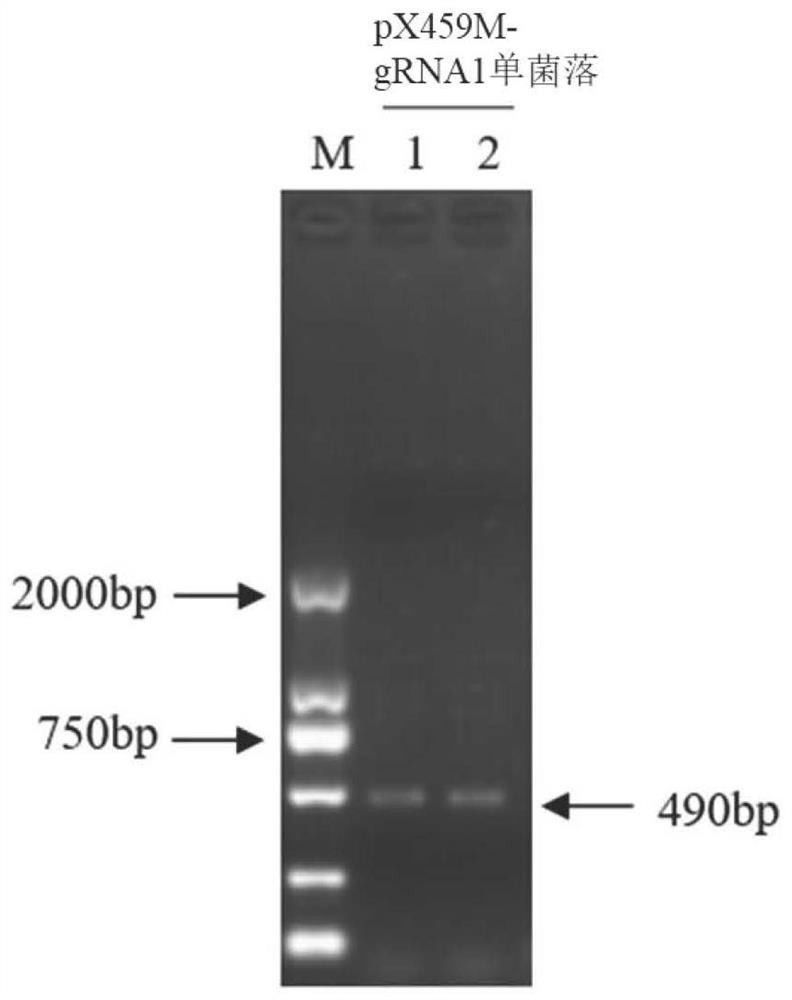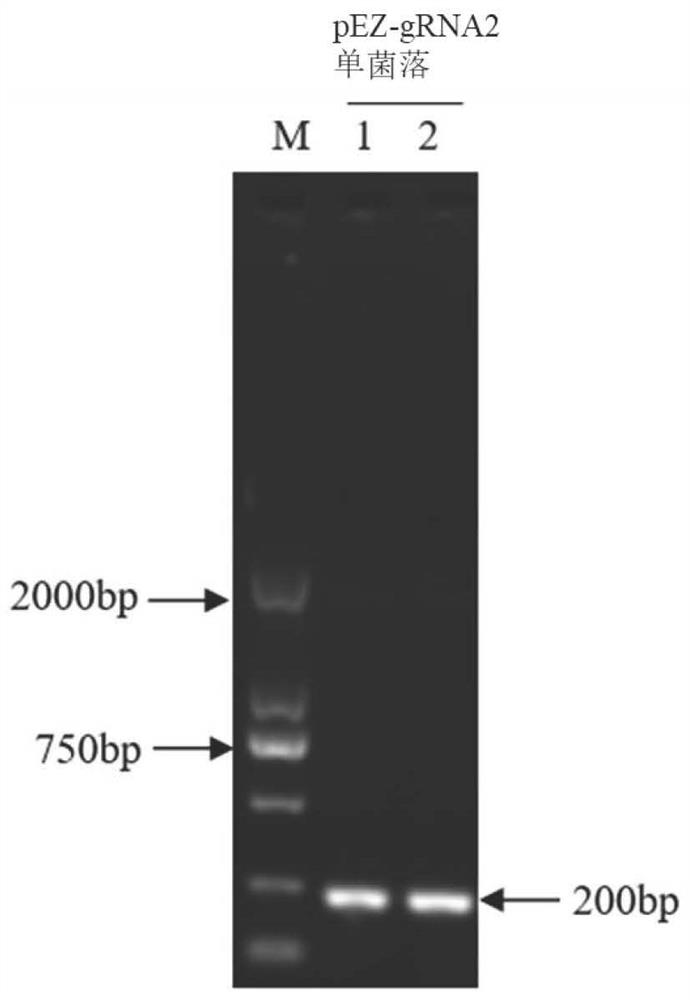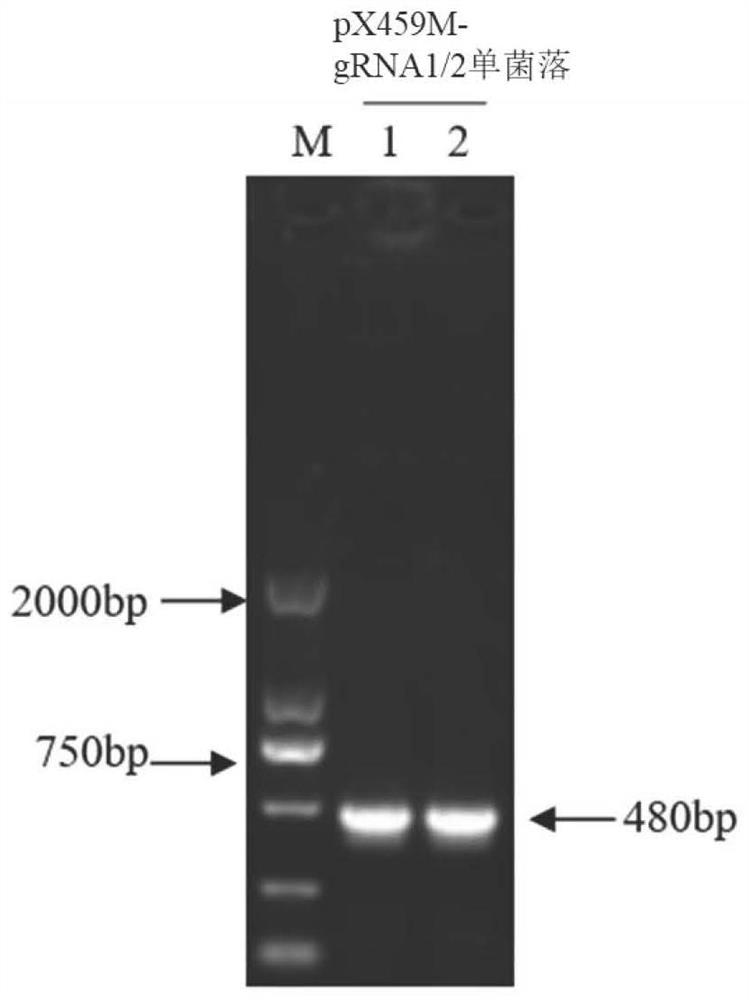Method for constructing pseudorabies virus gene-deleted attenuated strain and application of attenuated strain
A technology of pseudorabies virus and gene, which is applied in the field of constructing attenuated strains of pseudorabies virus gene deletion, which can solve the problems of inability to provide protection, weak neutralization ability of strains, etc.
- Summary
- Abstract
- Description
- Claims
- Application Information
AI Technical Summary
Problems solved by technology
Method used
Image
Examples
Embodiment 1
[0057] Embodiment 1, construct the pseudorabies virus strain (being the recombinant pseudorabies virus of UL13 gene deletion mutation) of UL13 gene deletion
[0058] In this example, CRISPR / Cas9 gene editing technology was used to specifically delete the UL13 gene of the pseudorabies virus Bartha-K61 strain. The specific operation is as follows:
[0059] 1. Construction and identification of UL13 gene knockout vector
[0060] 1.1 The amino acid sequence of the UL13 protein of the pseudorabies virus Bartha-K61 strain is shown in SEQ ID No.1 in the sequence listing. For the gene sequence of the UL13 gene of the pseudorabies virus Bartha-K61 strain, refer to the gene sequence of Bartha-K61 (Suidherpesvirus 1 stain Bartha) in Genbank (Genbank Accession No. JF797217.1, 02-NOV-2011).
[0061] In order to knock out the pseudorabies virus UL13 gene, two segments in the UL13 gene sequence were selected to match the 5'-N 20 -NGG-3' or 5'-CCN-N 20 -The 3' sequence regular fragment is...
Embodiment 2
[0088] Example 2. Effects of UL13 Gene Deletion on Host Natural Immune Response and Replication of Pseudorabies Virus
[0089] 1. The effect of UL13 gene deletion on IFN
[0090] Mouse fibroblasts (Mouse Embryonic Fibroblasts, MEF) at 3.5×10 5 Cells / well were plated in 12 plates at 37°C, 5% CO 2 Culture overnight in the incubator of embodiment 1, the recombinant pseudorabies virus of embodiment 1 UL13 gene knockout and pseudorabies virus Bartha-K61 strain (wild type) are respectively infected with MOI=1 MEF cell, after infection 0h, 12h, 24h RNA samples were collected, reverse-transcribed into cDNA, and the constitutively expressed GAPDH gene was used as an internal reference to normalize the cDNA concentration of the samples. Real-time quantitative PCR was used to detect the expression of type I IFN gene. Wherein, the upstream and downstream primer sequences of PCR detection type I IFN gene are respectively:
[0091] mIFN-F: 5'-ATGAGTGGTGGTTGCAGGC-3';
[0092] mIFN-R: 5'...
PUM
 Login to View More
Login to View More Abstract
Description
Claims
Application Information
 Login to View More
Login to View More - R&D
- Intellectual Property
- Life Sciences
- Materials
- Tech Scout
- Unparalleled Data Quality
- Higher Quality Content
- 60% Fewer Hallucinations
Browse by: Latest US Patents, China's latest patents, Technical Efficacy Thesaurus, Application Domain, Technology Topic, Popular Technical Reports.
© 2025 PatSnap. All rights reserved.Legal|Privacy policy|Modern Slavery Act Transparency Statement|Sitemap|About US| Contact US: help@patsnap.com



